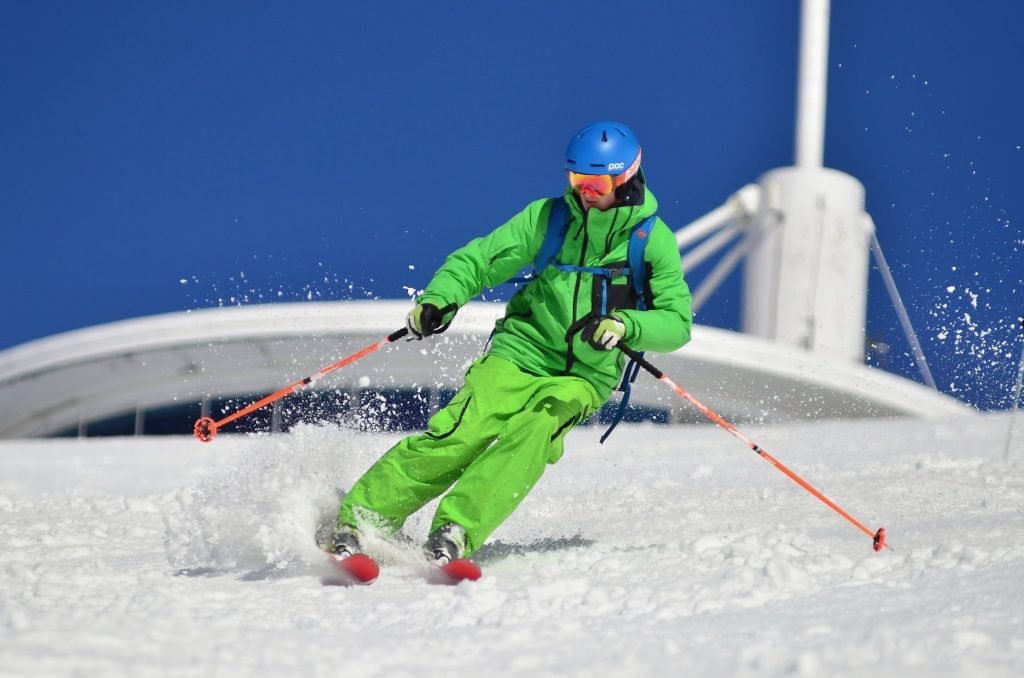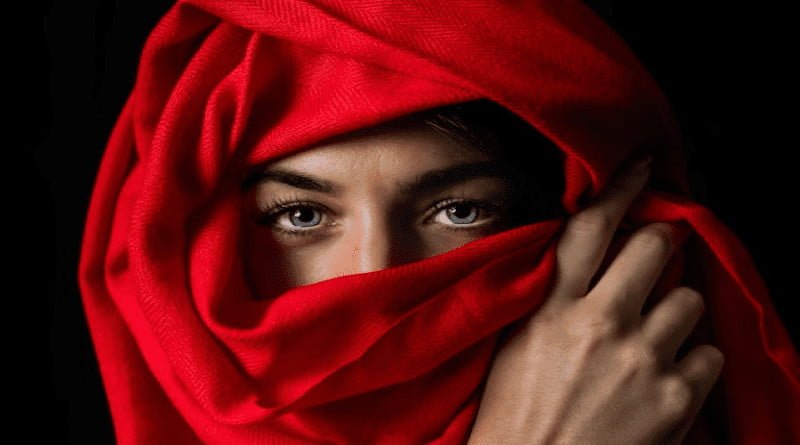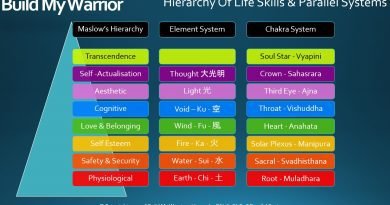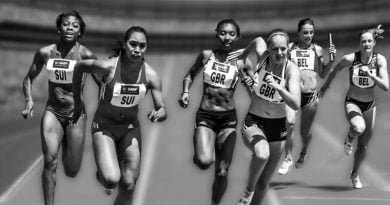How To Use Peripheral Vision In The Martial Arts
If you are looking to develop your ability to use ‘Peripheral Vision In The Martial Arts’, this is the place for you!
There are many sub-conscious reasons for using peripheral vision, in our daily lives. Driving while taking in a picturesque view, watching your children with the proverbial parents ‘eyes in the back of their heads.’ However, we can also choose to use it ‘deliberately’. We can protect ourselves, by being mindful of a suspicious person, through viewing them from the ‘corner of our eye.’ Then if we need to employ our martial arts due to an escalation, we can do so, without giving away our next move. This article looks at what is peripheral vision, a personal journey of discovery through skiing and later deployment into my own martial arts training.
Credit Featured Image: Adam Sabljaković
- What Is Peripheral Vision And How To Use It?
- How To Use Peripheral Vision On Various Levels Of The Hierarchy Of Skills
- Discovering Peripheral Vision As A Life Skill Of The Conscious Mind
- How To Engage Your Peripheral Vision In The Martial Arts
- Other Practical Use Of Peripheral Vision In The Martial Arts & Sports
- Peripheral Vision Supports Proprioception
- Loss Of Peripheral Vision, Also Known As 'Peripheral Field Deficit'
- Limitations of Peripheral Vision
- Peripheral Vision for A Relaxed Mind And Acute Performance
What Is Peripheral Vision And How To Use It?
While looking and focussing straight ahead, without moving your head or eyes, make a ‘conscious’ effort to be aware of the objects to the left, right, above and below you. These objects that lie outside your ‘central field of vision’, are in an area known as your ‘Peripheral Vision.’
Peripheral vision is outside the centre of our ‘gaze,’ and it is the largest portion of our visual field. A normal healthy visual field is recognised as being around 170 degrees around, of which 100 degrees is the peripheral vision, and 70 degrees in the ‘centre of our gaze’ and the ‘near peripheral vision.’

There are three segmented areas of in the ‘field of view’, that make up our 100 – 100 degrees of peripheral vision:
Far-peripheral vision: at the edge of the field of view
Mid-peripheral vision: in the middle of the field of view
Near-peripheral vision: adjacent to the centre of gaze
Peripheral Vision In Humans Versus Animals
Peripheral vision is weaker in humans than in many other animals. This disparity is even greater where it concerns our ability to distinguish colour and shape. This maybe due to our lesser reliance on it during the more recent ‘modern age’ of our species. Animals, on the other hand, need to keep a constant vigilance for opportunities to gain food, and spot threats from predators. From this point of view, its is easy to conclude that peripheral vision, is declining through deepening domestication of the human race.
How To Use Peripheral Vision On Various Levels Of The Hierarchy Of Skills
Level 1 – Physiological Life Skills – In a survival setting, peripheral vision is essential for searching for water, warmth, food and shelter opportunities. Scanning the vast area in front of you with focussed gaze is too slow and will extend your journey while searching, so much that, you may run out of water and food, before you find anymore.
Peripheral vision allows you to scan across an area. in an approximate level of detail. You will need to rely on what feels like a sixth sense to raise a flag, when you, sub-consciously see something in your periphery that is of interest. I say sub-conscious, as peripheral vision takes place out of central gaze, and so it is really hard to maintain constant concentration on what is in it. Now use your focussed gaze, to look and decide, is this what we are looking for?
Level 2 – Safety & Security Life Skills – In a setting where your safety and security is at risk, peripheral vision, is essential for looking out for trouble,. It is the skill that allows you to do so, without giving an obvious indication that your are aware of a suspicious person’s presence, or that they are a threat.
This low level profile approach is very effective, in being aware without showing a scare. As you pass them by, you can actually ascertain a lot of information about their intent, possible weapons carried, build, state of mind, and energy levels. All the while maintaining a low profile so as not to draw attention.
It is also used by parents, to keep an eye on the safety of children or pets, without being seen to watch them like a hawk. Thus supporting their own opportunity to build self confidence in themselves.
Level 3 – Self Esteem – Peripheral Vision can be used, In a setting where you want to show confidence, assertiveness, and conviction. You can convey that you are aware of individual’s presence, without looking directly at them. Acknowledgement and warm respect, that they are there is given as a radiated warmth, with smiles and politely giving space while moving through the room, but without giving them the attention of direct eye contact.
Busy, famous, crowded people will do this as a show of confidence that they are coming through without stopping, but without being rude. It’s very much a cross hybrid of peripheral vision and a show of intent.
Level 6 – Aesthetic Life Skills – Peripheral vision as a whole subject sits in level six as an aesthetic life skill, because mastery of its use requires, a mastery level of articulation in so many virtues. To name just a few of them, confidence, assertiveness, passiveness, patience, and many more.
It also sits well with other life skills such as proprioception, contemplation, meditation, observation, instruction to name just a few. In short peripheral vision, can be used at a simple level, but mastery of it sits on a much higher plain.
So in terms of Martial Arts, the use of peripheral vision is an aesthetic life skill, as it involves an expanding use of the mind and body, in pursuit of mastery of a kata or ability. You can look at an Uke, opponent in your direct central gaze. As you walk towards them, you know that you will attack the one one to their left, who of course is in your peripheral vision.
Discovering Peripheral Vision As A Life Skill Of The Conscious Mind
Trial & Error, A Personal, Yet Practical Example
I can think of many examples in my own past, when I have used peripheral vision to my advantage, and also many where to my detriment, I did not. Yes, peripheral vision is one of those natural born abilities, that we all have, and of course we use it subconsciously everyday without realising it.
However, bringing it to the fore as a consciously deployed ability, is something that we need to be introduced to. In fact, I would say that most of us who have tried it, have done so, after someone has told us about it. Or we have come across it, after watching a film or reading about a technique. For example, we can watch a film, where someone is using it to keep an eye on the bad dudes, but either way using it in the present moment of our own mindful lives, is something that we need to be prompted to do. Either by something happening, or by someone intervening.
So knowing that we will all have a peripheral vision story, try to spend some time in the next few days, thinking or meditating on your own experiences. I did just that in the summer of 2022, and recalled how I developed the technique to help my skiing. I have since used it to vastly improve my martial arts ability. So here is my peripheral vision journey, laid out for you.
My Peripheral Vision Story, ‘Avoiding The Tree
While I was growing up, I made regular trips to my local dry ski slope on a Saturday morning in the winter of the late 80s. For £0-90. Yes it really was a long time ago. I could hire boots, skis and poles, and have the use of the artificial dry slope. My friends, and I trained for 3 hours at a time, training and practicing various turns and stops. The less popular method of stopping, was by using ‘The Tree’, which was to the side of the beginners area, pictured below as the area to the left of the black matting.

At first I used to look at the tree, and try to ski past it. Being an anxious, but enthusiastic beginner, I kept it in my centre gaze. I labelled it, ‘avoid at all costs.’ Naturally, I was starring at it, high on adrenaline due to my new hobby excitement. This meant that I steered towards it. For anyone who has tried skiing. snowboarding or surfing, you will know very well that where you look, is where you go. In the early days at least. So as I snowploughed towards it, my fate inevitably loomed into view. Whallop, not just once, but whallop, twice.
Each time that I picked myself up, I had two thoughts. 1. Those tyres are not much help, and 2. What a stupid place to put a tree. I would never put a tree there if it was my ski slope, either that or I would have it felled, and smoothed over. Of course it wasn’t my slope, and I couldn’t do anything about it, anytime soon. So I needed a solution.
Aim, Turn & Burn or Deliberate Periphery
All the same I needed a strategy. So the next time I skied down the slope, I aimed at the tree and then turned at the last moment. For sure that worked a few times, as a deliberate act. Then I had a brain wave, in that I decided to put the tree deliberately in my blind spot. Making sure that I was aware that it was there, but also being focussed on my true destination. Which, was the edge of the hedge at the bottom of the slope. This worked really well, and from that moment on, I kept everything, that was not my immediate target, in my peripheral vision.
Creating A Rhythm Of Target Nomination & Passive Execution
In many respects, it was the act of consciously using peripheral vision, that led to a much more relaxed form of skiing performance. With relaxation in my stance to stance movements, I created smoother turns. I therefore had much more flow and fluidity. In fact I opened up so much relaxed confidence, that I could add speed and even aggression, into turns and minor jumps. Wow, just wow.
I discovered that a relaxed body, leads to supple legs. Therefore, I was ready to start tackling the mini moguls. I could also use of the lift from the bottom of the slope, all the way to the top without falling off. Even falling over without hurting ones limbs became the norm. As a less tense set of muscles, are less likely to be strained during a fall. All of this from consciously using visual data from around me, in the peripheral area.
Before long, I progressed on to committing to a sweeping set of parallel turns. Skiing left-right-left-right, schuss, then repeat. Now, I could look ahead with my centre gaze, pin point the centre of the radius of the turn, nominate it. Then before I got there, I would book that point into my peripheral vision for sub-conscious execution. Then, I would focus on the next centre point, again using centre focus. This meant that I was using centre gaze to cognitively pin-point turning centres. Then, actually execute the turn in peripheral vision. For me this is a truly aesthetic life skill, as it is as much an execution of an art form as it is a physiological science.

I picked up this idea from watching BBC Ski Sunday. The commentator pointed out that the competitors are focussed on the next turn, while they are executing the current turn as planned. The feeling of being confident enough to relax, comes from being prepared and having a plan to work to before getting there. It slows everything in your mind, down to a rhythm. Whereas, before it was rather more of an evolving, ever-changing story, with an immediate concentrated calculation.
How To Engage Your Peripheral Vision In The Martial Arts
So this is a life skill, which needs conscious practice, but not too much concertation. If you concentrate too hard you will be so focussed on what you want to have in your periphery, that it will be centre focussed. On the other hand, if you don’t try hard enough, you’ll lose the conscious recognition of what is there in your periphery, and the exercise does not work.
Don’t forget, the use of peripheral vision is actually a natural phenomenon. It’s use and recognition, takes place mainly in the sub-conscious part of the brain. We are actively trying to use it in the conscious part of the brain.
Using peripheral vision in martial arts, is actually no different, to using it in any other area of life. The point is that you are using data from outside of your centre gaze, and making decisions and reactions based on it. Whereas, you would normally not trust it, without a long burst of concentrated, evaluated centre gaze.
Exercise 1 – The Third Point
As we all know, when we want to put our opponent on the ground, we look for the third point of stability. We direct our strike, through our opponents body, to that point. In this first example, try looking at the third point in central gaze. As you move towards your opponent, put the third point in your peripheral vision. Know it is there and know that is your target, but don’t look directly at it. Now move to execute the kata.
Ask yourself these feedback questions.
- Did you feel like you had more time?
- Did you manage to stand with a more upright stance?
- Did you have a sense of not showing your opponent, your intention?
- Did you feel less anxious to execute the move and therefore more relaxed?
- Did you feel like you were in control of the situation, and would continue to be for the next?
Exercise Two – Pre-Nomination & Passive Execution, In a Rhythm
Now choose a kata or sequence which you are proficient with. It needs to require at least 3 moves, on your opponent, with strikes. I am not going to describe here, exactly what to do, as it would do you no service. You now need to adopt the principle of peripheral vision, into your chosen kata.
So in exercise 2, I would like you to concentrate on the concept of our skier. Nominate the centre of the ‘next’ turn, while executing the current one in peripheral vison. So for example, you are currently striking the groin to fold your opponent over, in peripheral vision. Use your direct gaze, to nominate your next striking point, that comes after the groin strike. Practice this technique, each time that you practice a kata on a training partner.
Ask yourself these feedback questions.
- Did you feel like you had more time?
- Did you manage to stand with a more upright stance?
- Did you have a sense of not showing your opponent, your intention?
- Did you feel less anxious to execute the move and therefore more relaxed?
- Did you feel like you were in control of the situation, and would continue to be for the next, and the next?
- Did you feel like you could impose a form of intimidating intent of relentlessness on your opponent?
Other Practical Use Of Peripheral Vision In The Martial Arts & Sports
Troubleshooting Training Issues
Recently I was reminded how patient my fellow martial arts colleagues are regarding misguided striking. I had one of those nights where psychologically, I was landing my strikes in all the wrong places. Thankfully it wasn’t too long until the final call of ‘Yamae’. Then I could look forward to fathoming out what had gone wrong. I went home feeling a tad embarrassed, and not sure what had gone so wrong with my accuracy lately.
It was a week later, that I remembered ‘The Tree Lesson’ from my younger days. This time, I was actually snowboarding, on a dry slope at a summer holiday park. Of course it was some 40 years later, this time with my son and daughter. It was a great occasion, for a very proud Dad, sharing a great sport.
My son headed slowly downhill, towards a post at the base of the ski lift. I couldn’t help noticing how familiar that feeling is. For him too, it proved to be like a magnetic target.
Later, that night while watching TV, I sat and thought about the tree and the ski lift post. Then I thought about my martial arts striking issue. Suddenly, I realised what went wrong in my martial arts class. I was aware of some injuries in my colleagues . Of course the more aware you are of someone’s shoulder, knee or toe injury, the more you look at it. Naturally for an intermediate like me, when you strike, your hand land where you look. It is exactly the same of course in football or soccer, the ball goes where your centre gaze sits. Which, hopefully is the back of the net.
So during the very next lesson, I started to use peripheral vision. I combined it with putting injuries in the back of my mind, which actually worked really well. It was a great night, and I went home feeling like I had conquered a training barrier type of milestone. As I drove home, I wondered how many martial artists come across a barrier like that, and never get past it? If a barrier persists, it can be like a reason to stop attending. Yet, this is when it is so important to keep going, and just as much to keep on deep thinking, until the answer pops out.
Mis-Direction in Ninjutsu & Other Martial Arts
In the art of ‘Ninjutsu’ as with many martial arts, ‘mis-direction’ is a key strategy. In Ninjutsu we learn this in a kata known as ‘Ku’ or void. After receiving a low level strike to hip height, we block. Then we move to deliver a strike to the face. This is of course, a bluff, as the real strike comes a moment later, to the hip as stamp through kick. Here, central gaze is used, to sell the strike to the face, but peripheral vision, is used to deliver the kick to the hip.
Mis-Direction at The Goalkeeper, Using The Same Principal
Later that same ‘holiday week’, the very next night after the snowboarding tree revelation, my son and I practiced football. He was in goal, and I was striking with the ball. I would look to the left of the net, but using peripheral vision, aim and kick to the right, and vice versa. Of course, this meant that he was always saving in the wrong direction. Besides being hilarious for both us, it was a great learning point too.
I would make 2 strikes on the left and then 2 on the right, Then just as he realised my rhythm of switching back and forth, to break the predictable pattern of repetition, I changed it.
I scored a personal record of 4 goals in 2 minutes. Never did I ever before do something, like this in football. Soccer of course, for those in the USA. I was on fire. Not that I have a particularly distinguished football background, while practicing with my son, I felt particularly invigorated. So much so, that I found myself sprinting and leaping for the ball. Launching strike after strike, as frequently as I could.
Deceiving your opponent in order to achieve your goals without direct conflict, is yet another form of Ninjutsu! Namaste!
Peripheral Vision Supports Proprioception
The very essence of peripheral vision, involves not looking directly at your target. Therefore, you will certainly need to use your powers of proprioception. So what is it?
It is present in every muscle movement you have. Without proprioception, you would not be able to move without thinking about your next step. Proprioception allows you to walk without consciously thinking about where to place your foot next. It lets you touch your elbow with your eyes closed, it allows you to strike at your opponent, with precision, without concentrated vision and complex intensive calculation. This latter point of of great importance to us as martial artists.
Proprioception, otherwise known as ‘Kinesthesia’, is your body’s ability to sense it’s own location, movement and actions. The important point here, is that you must do this without using central gaze. After all, hen we walk along, a path, we do not ‘need’ to look at our feet to use them. We know where they are, how long our legs are, and all of this without looking at them. We know how much effort is needed to lift and move the leg as an action. Putting it all together, we create a movement to put our foot forward.
All of this is proprioception. Location, action and movement. We also use peripheral vision to adapt our walking step to the terrain. For example, when we see a step, we see it is a block getting closer and closer. It is in our lower area peripheral vision. We then adjust the action of our step to account for the additional height, and use feedback felt through the foot to confirm that we have found the step. Also that the foot has successfully landed.
If we are not sure how it is going, we sub-consciously lower our head to use peripheral vision. Then we make a sub-conscious confirmation. If we feel a fall starting due to an error in judgement, then our senses are raised to an alarm level. Now we pull our central gaze into view, to accurately asses the mis-step and adjust quickly, to make a recovery. During this phase, adrenaline, muscle tension and other features of reaction come into play.
So as you can see, peripheral vision and proprioception, go hand in hand, to work together. When things start to go wrong we use central gaze and heightened awareness. We will have a full post on proprioception, in the future.
Loss Of Peripheral Vision, Also Known As ‘Peripheral Field Deficit’
Like many things in life, many people do not appreciate peripheral vision until is starts to decline. You of course, have the opportunity to appreciate it, as you are here. After learning more about it, hopefully you will go on to understand it further.
Loss of peripheral vision results in a condition known as’ tunnel vision,’ where as the loss of central vision while retaining peripheral vision is known as ‘central scotoma.’
Loss of peripheral vision, can be subtle and hard to detect from day to day. Over time the difference can be quite substantial. Effects of peripheral vision loss, may include difficulty seeing in dim light, a decrease in ability to navigate while walking, difficulty in spotting hazards while driving, unless in direct gaze. A lack of awareness of people or objects in our near path can lead to clumsiness in moving around the house and a general vicinity.
Eye care professionals believe that loss is linked to nerve damage, which can be caused by glaucoma or injury. Also other things such as eye strokes (occlusions), detached retina, brain damage from stroke, disease, or direct eye injury, optic diseases, concussion and other conditions that cause neurological damage.
If you have any concerns for your own eye health including peripheral vision loss, you MUST, contact a professional. Either your eye care specialist, your optician (eye doctor in USA), or your doctor IMMEDIATELY. He or she, will give you a visual field test to determine where your blind spots are located. Any sudden decrease or loss of peripheral vision is a reason to seek medical attention immediately. It could indicate a serious problem.
Treatment for peripheral vision loss may not be as simple as wearing glasses, (eyeglasses in USA). Occasionally a prism can be added to glasses to help expand the field of view. In most cases, however, your optician, will want to determine the cause of the loss and treat that first. They will likely hope to restore some of your peripheral vision or at least prevent further loss.
Limitations of Peripheral Vision
Your mind sometimes fills in the detail that you miss, as a way of filling in the gaps. Imagine using a high performance, high resolution camera for central gaze, and a low resolution blocky image camera for peripheral vision. Your brain then fills in detail that is missing, using imagination, based on experience and of all things, biases, which build a fake picture of what we expect to see. What you see in your mind is therefore a hybrid of vision and imagination. I am sure we have all come across stories, of crime witnesses, believing they saw something. Actually they are re-creating what they are being asked if they saw, as a confirmation bias.
Peripheral Vision for A Relaxed Mind And Acute Performance
In martial arts, we need to be careful in a real situation or challenge. We may need to ask ourselves, ‘does my opponent have a knife, or are they holding a hand weapon in reserve?’ All the while, to dip into central gaze, for a deeper look, will serve as a tell of concern, and a loss of cool, giving our opponent an advantage. This is why good advice is generally, to assume they have a knife and act accordingly. Keeping the potential weapon in one’s peripheral vision so as not to focus on it, leads to heightened anxiety. Once this is high, we loose our grip on using our skills. So again, keep on using peripheral vision, to maintain that relaxed mind, and acute performance.



